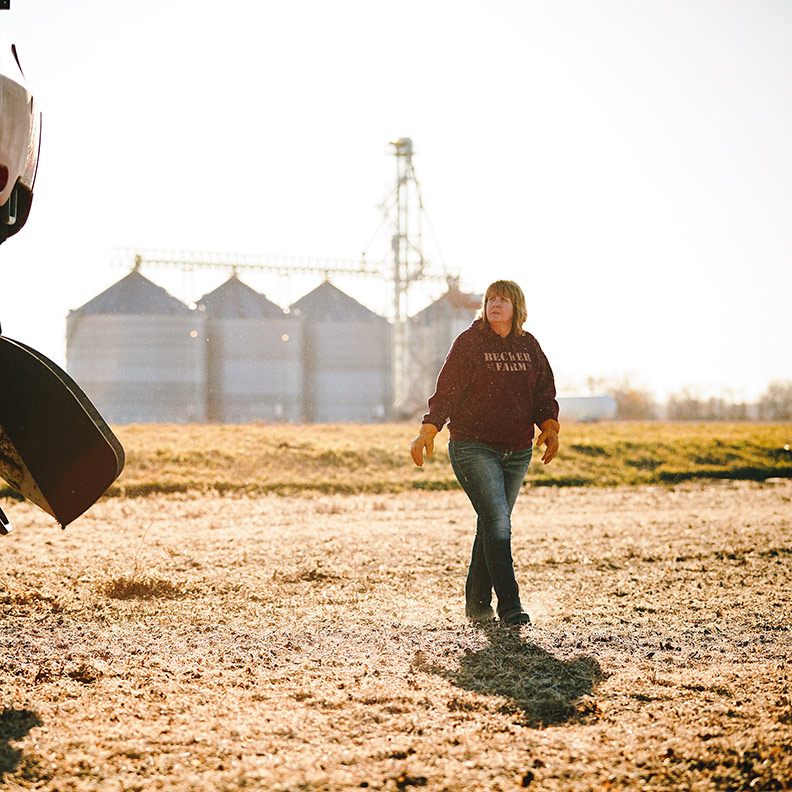As the 2023 farming season wraps up, farmers are reporting good progress with their crops and are now turning their attention to planning for the year ahead.
In 2024, ag operators will be keeping a close eye on soil moisture levels. With drought impacting much of the Midwest throughout 2023, farmers will be eager to see increased rainfall as we head into spring. Profit margins will also be closely watched. Crop prices are down from recent highs, and if input prices remain elevated, farmers could be dealing with tight margins, which makes effective planning that much more important.
Finally, the federal farm bill will be on the radar next year. Congress recently passed a stopgap spending measure, which included an extension of the current farm bill until September 2024, when a new bill will be needed. The 2024 legislation could include carbon initiatives and other new programs that ag professionals will be anxious to learn about.
U.S. row crops
Harvest is nearly complete for major U.S. row crops. Corn was 88% complete as of Nov. 12, on par with the five-year average. Soybeans were 95% harvested, which is slightly above the five-year average. Meanwhile, winter wheat is off to an excellent start with a healthy 81% already emerged.
The U.S. Department of Agriculture estimated the 2023 U.S. corn yield at 174.9 bushels per acre, up 1.1% from October’s estimate, and the 2023 U.S. soybean yield at 49.9 bushels per acre, nearly identical to October’s estimate. The stocks-to-use ratio for corn is estimated at 14.9%, up from 9.9% in 2022-23, and the soybean stocks-to-use ratio is estimated at 5.9%, a decrease from 6.2% last year.
At the local level, we’ve also seen record sugarbeet prices and yields throughout the Red River Valley.
U.S. livestock and dairy
July through December 2024 Class III milk futures are all above $18.50, while hog prices are depressed due to high supply. February 2024 lean hogs are currently $75.93, compared to $77.00 back in August.
Bird flu is still causing supply issues within the poultry industry, though the situation has improved from last year. Through the beginning of November, about 5 million birds have been slaughtered due to exposure, compared to nearly 58 million in 20221. Cases continue to tick upward, however, as a result of seasonal wild bird migrations.
Local ag outlooks
Kevin Sortland, Ag Banker, Rugby, ND
“Harvest is pretty much complete for all crops except for corn.
“Yield reports in this area of North Dakota have been average to above average on all crops. Although we had a late spring around here, we had a nice warm June with timely rains in July and August. Farmers are taking advantage of the warm November weather to do some fall tillage and fertilizer application.
“The primary concern heading into 2024 is probably just the profit margins, especially on small grains. Crop prices are off quite a bit from their highs earlier this year. With current input costs and an average crop, some of the margins look fairly tight for 2024. We will likely need to rely on weather rallies, other events or an above-average crop to lock in a larger profit margin for 2024.”
Russell Carnigan, Ag Banker, Grafton, ND
“An early-season winter storm in October dumped 6-18 inches of snow in the northern Red River Valley as well as northwest Minnesota, which has delayed the corn and sunflower harvest in this area. Harvest resumed recently, with the return of some above-average temperatures.
“We did receive a little relief from the drought with that storm, but our sub-soil moisture has definitely been depleted throughout the 2023 growing season.
“Land sales have been strong locally this year. We recently set a record in the northeast corner of North Dakota at $17,500 per acre, and there doesn't seem to be any signs of this letting up. There are several more sales coming up in the area as well.”
Global agriculture
In Brazil, weather has been worth watching lately. The southern part of the country has been very wet, but northern Brazil — the dominant soybean growing area — has been hot and dry. The soybean crop is not yet in great danger, but it is in need of rain heading into pod setting. The crop is maturing behind schedule and putting the second corn crop at higher risk of missing critical rain.
Unrest in the Middle East is likely not an immediate issue for U.S. agriculture, as long as the conflict doesn’t pull in additional nations. However, a major disruption to commercial vessels in the Black Sea or Gulf of Suez would instantly send global commodity markets into disarray.
What to watch for
In the U.S., soil moisture in the northern and western Corn Belt is adequate heading into winter, but Iowa’s topsoil moisture is rated 58% short to very short. Meanwhile, Indiana sits at 37% short to very short, and Illinois is at 35%. Producers across the region and in these states in particular will be hoping for plenty of spring rainfall to help alleviate drought concerns.
Brazil is in a similar position when it comes to moisture. If hot and dry weather persists, it will likely spur a bull rally in both soybeans and corn. And to the south in Argentina, observers will be keeping a close eye on the new president, Javier Milei, following the country’s Nov. 19 election, as potential policy changes could have a big impact on global agricultural exports. Today, Argentina charges a 33% export tax on soybeans.
Connect with an ag banker for more support as you get ready for the year ahead.

